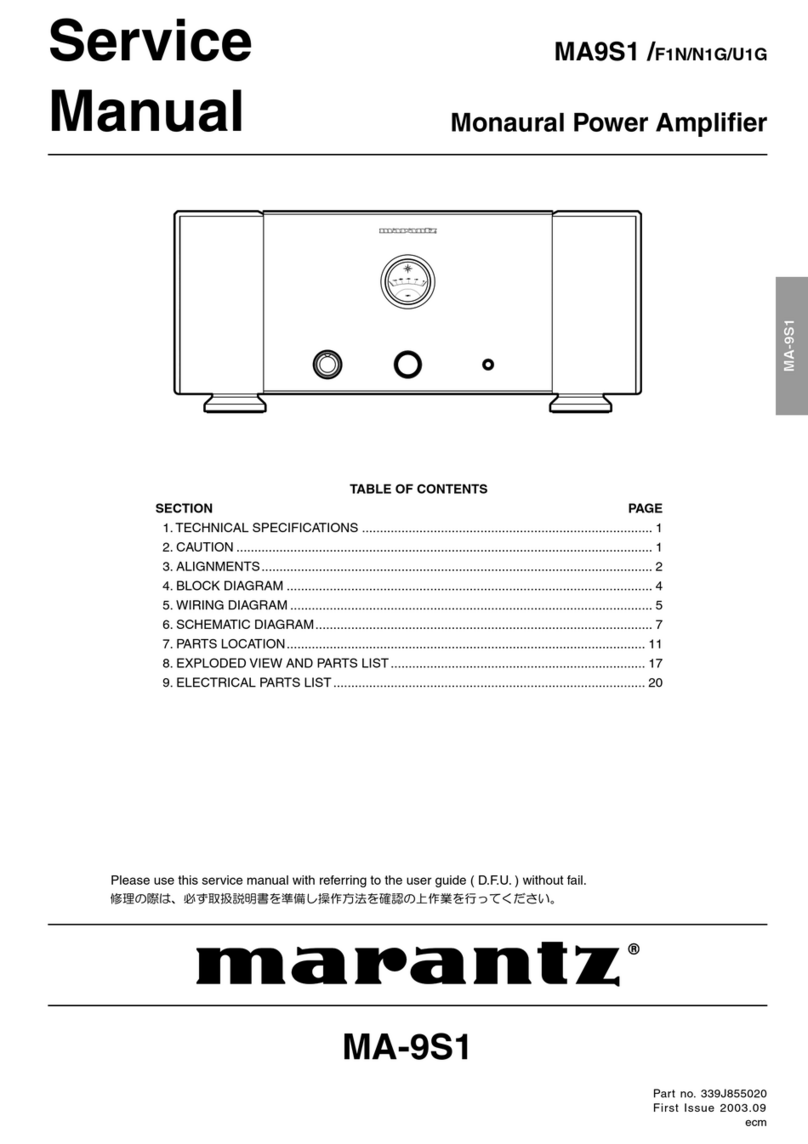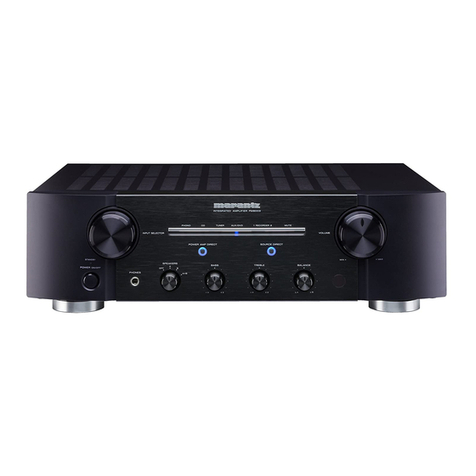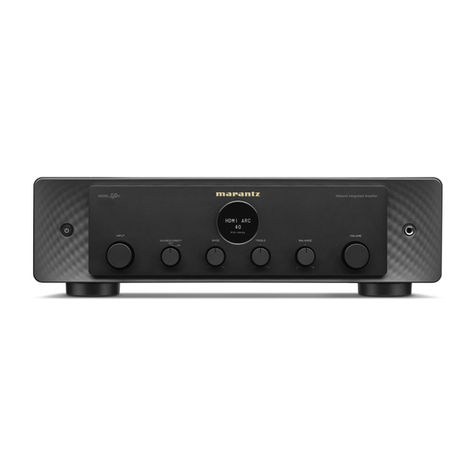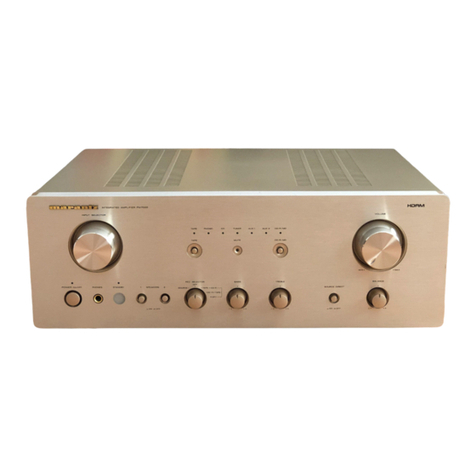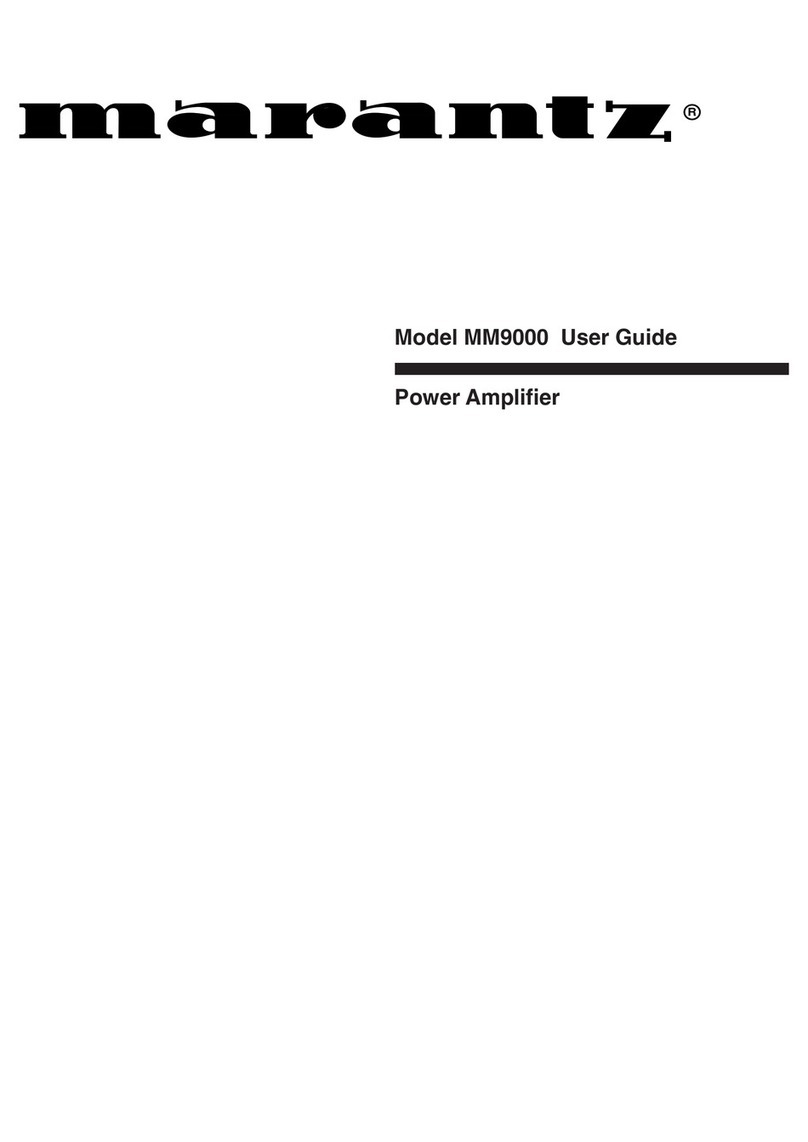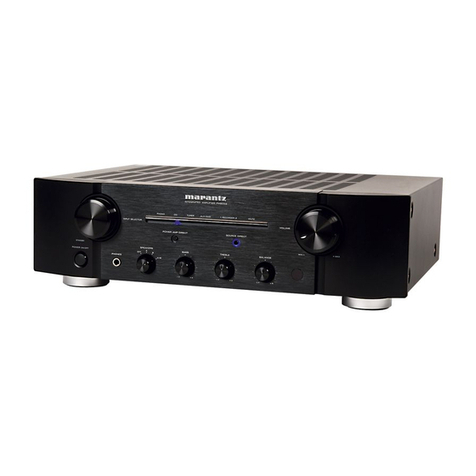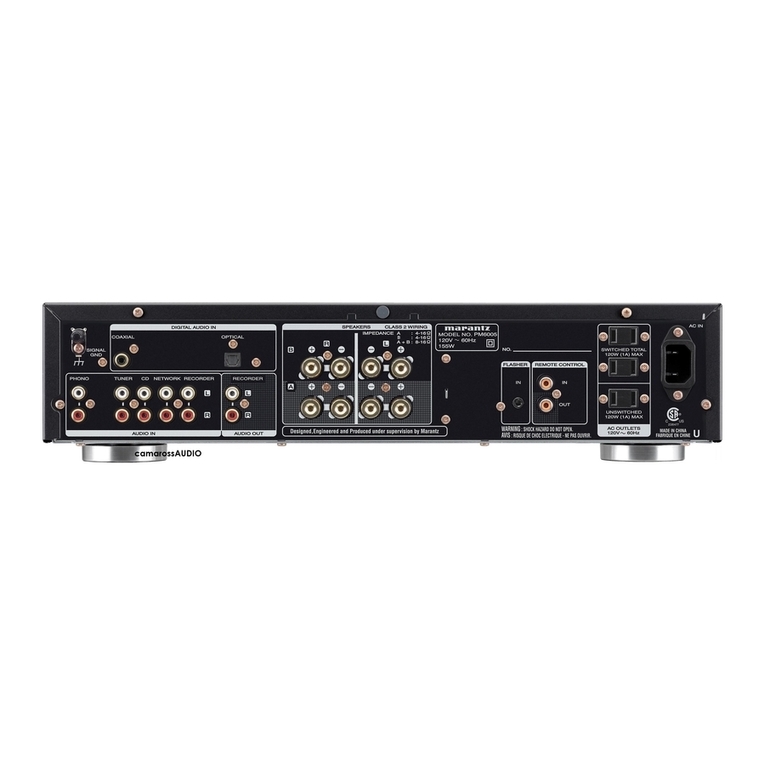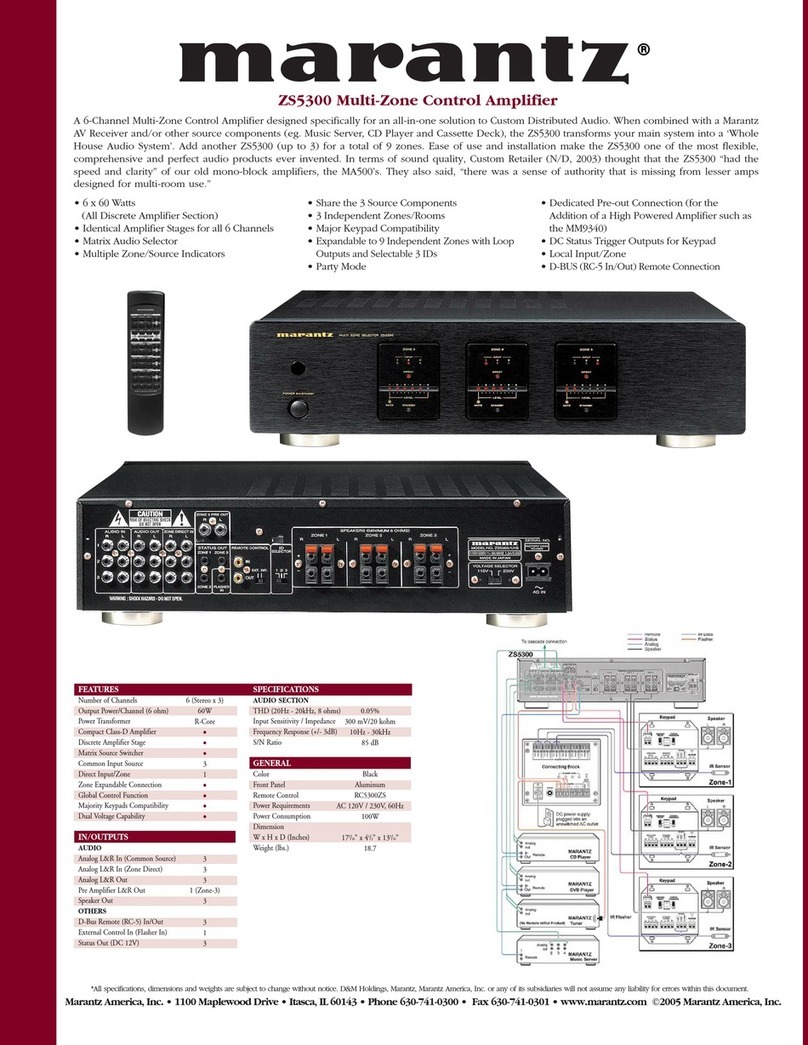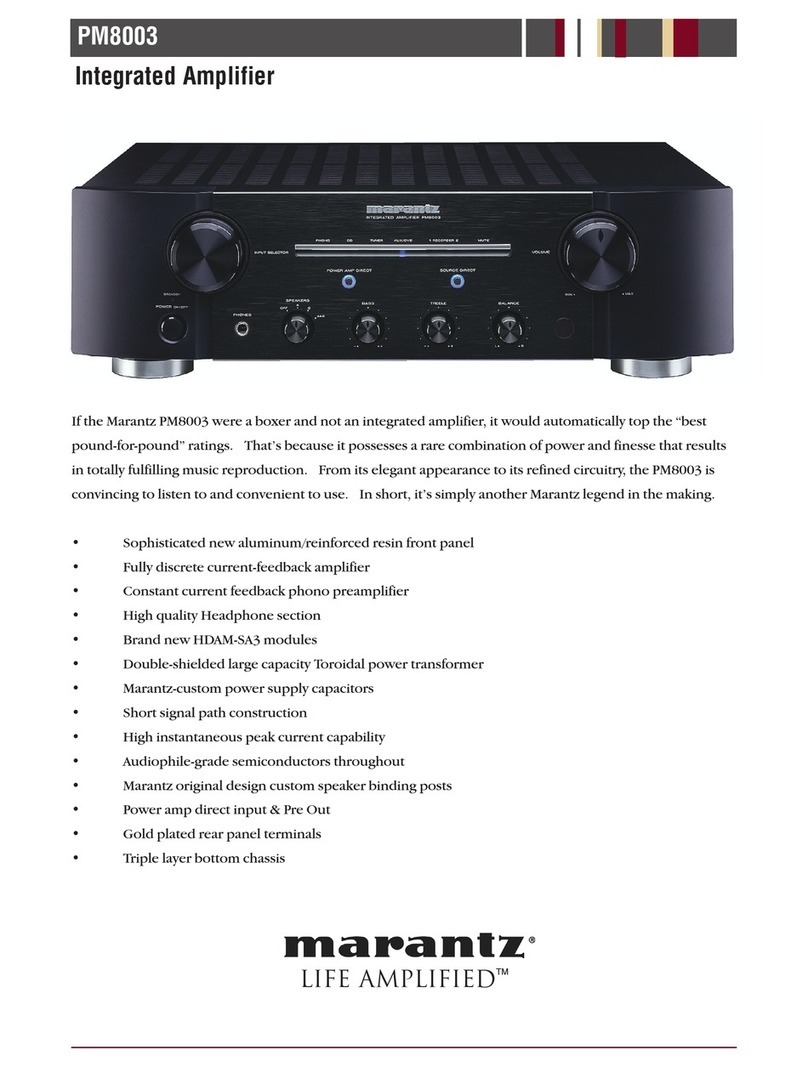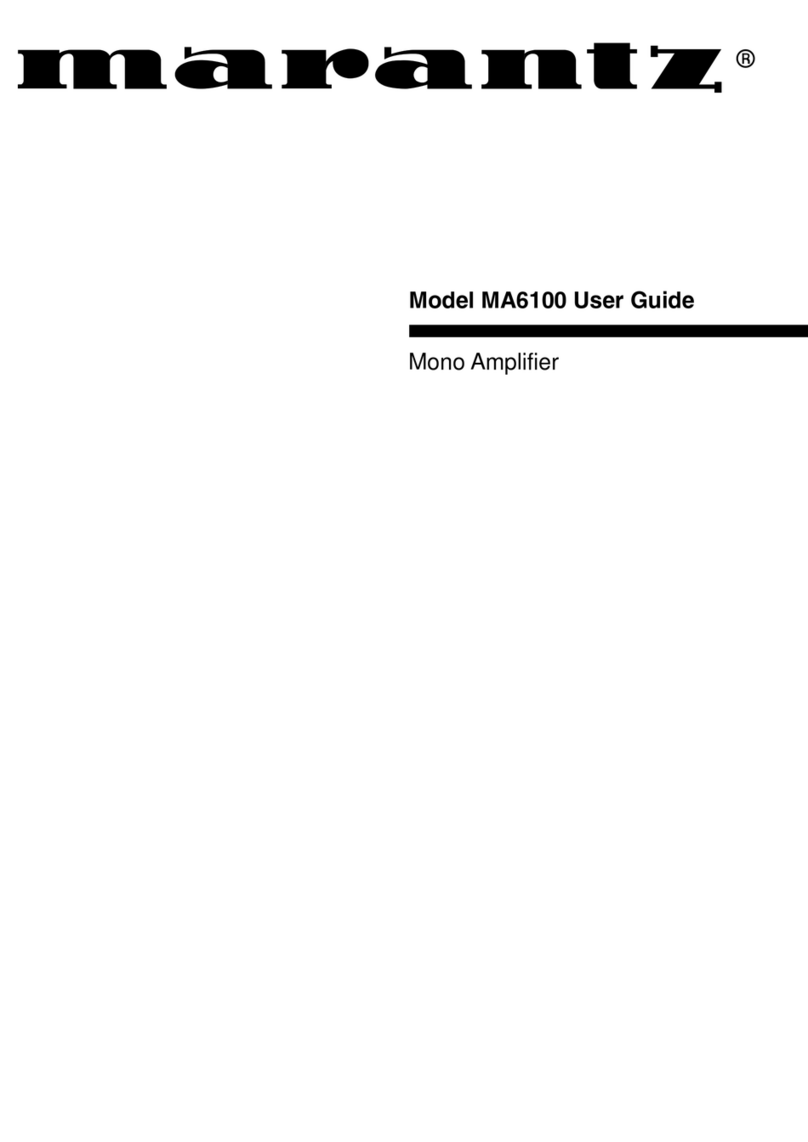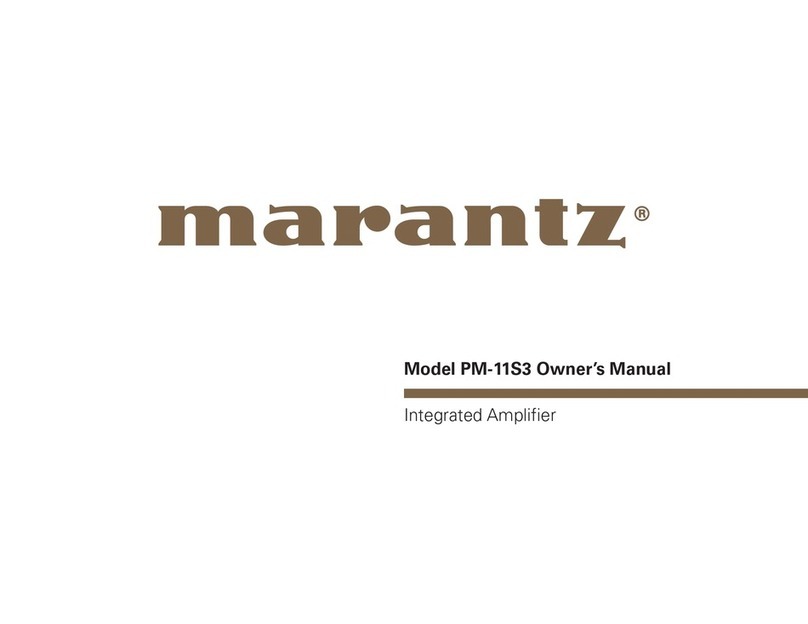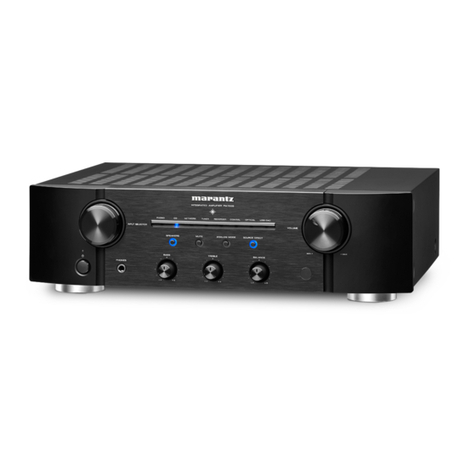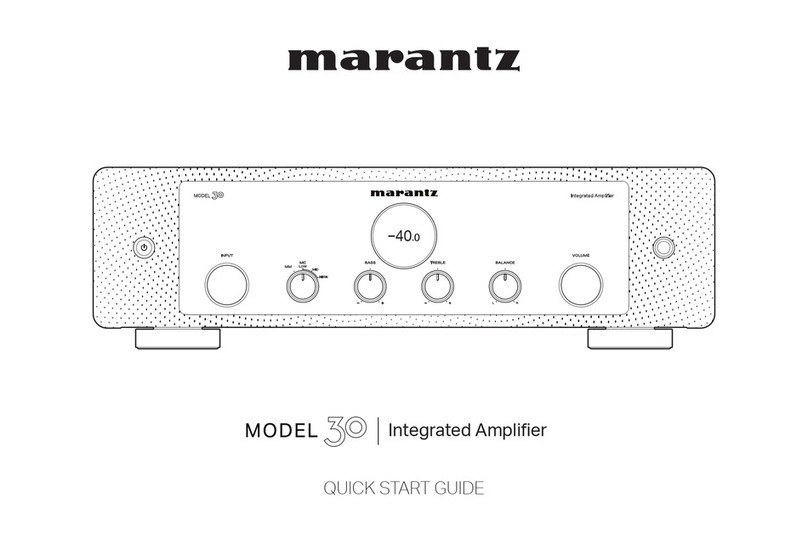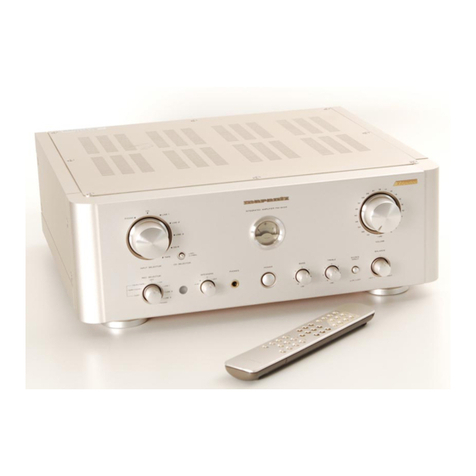i8
.. r...ic: ;un",,"...,
(i) Ct
r
2. When two microphones are connected to the
each Rand L jack with the MONO IN (L,R)
pushswitch in the normal OUT position, the
sound can be heard in stereophonic mode. With
the MONO IN (L,R) pushswitch depressed, the
Land R channel sounds are mixed and heard in
monophonic mode.
3. When high level signal sources (more than
100mV) are connected to the one or both
mic/aux 2 jacks, place the selector switch in
the AUX 2 position. Do not place the selector
switch in the MIC position to avoid undesirable
distortion due to signal overload.
Signal source connected to the "L" jack is
heard through the L channel speaker, if the
MONO IN (L) pushswitch is not depressed,
normal OUT position. If the (L) pushswitch is
depressed, the sound can be heard through
both left and right channel speakers.
When two kind of high level signal sources are
connected to the "L" and "R" jacks, keep the
MONO IN (L,R) pushswitches in their normal
OUT position for stereo operation and depress
both the switches for mono operation.
volume control-This control maintains stereo
balance within 3dB at all normal settings. It
controls the level of both output channels simul-
taneously. It has no effect on the TAPE OUT
jacks.
balance control-This control alters the level of
either output channel in situations where it is
necessary to correct unbalanced programs some-
times encountered in older stereo recordings, and
in some present-day stereo broadcasts. As it is
turned away from its center position, it decreases
the level in one output channel while maintaining
the level in the other channel.
5
I
,
I
.
<I
IOt_oopho...... po-,.
Figure 3. Front Panel Controls and Jacks
bass, mid and treble controls-These controls alter
the tonal balance of program signals to suit
individual listening preference. Because each cont-
rol is separate, it is possible to compensate for
unbalanced room acoustics.
L
1
LOW FILTER Switch-This switch can be used to
sharply reduce turntable rumble, low frequency
noises, or "boomy exaggerated" bass. Obviously,
use of the filter wiII reduce desired low frequency
sounds as well as unwanted noises, therefore it
should be used judiciously. The out position
switches the filter out of the circuit.
Hi FILTER Switch-This switch can be used to
sharply reduce high-frequency noises associated
with the playing of poorly recorded tapes or old
worn disc recordings. If an AM tuner is being used
with the Model 1060, this switch will help con-
siderably by eliminating the 10 KHz "whistle"
effect. In the a UT position, the high-frequency
filter is switched out of the circuits.
TAPE MaN Switch-When this two-position switch
isin its normal OUT position, the program source
being heard or recorded is determined by the
setting of the selector switch. In the IN position,
only the program source connected to the TAPE
IN jacks or DIN tape recorder jack on the rear
panel is heard. However, the program source
indicated by the selector switch continues to be
fed to the TAPE OUT jacks. This facility permits
you to feed any program source to your main tape
recorder while you listen to the "results" of the
recroding as it is in the progress.
,.
LOUDNESS Switch-For more pleasing tonal
balance at low level listening, the bass and treble
should be boosted. With the LOUDNESS switch
depressed, the bass and treble are automatically
